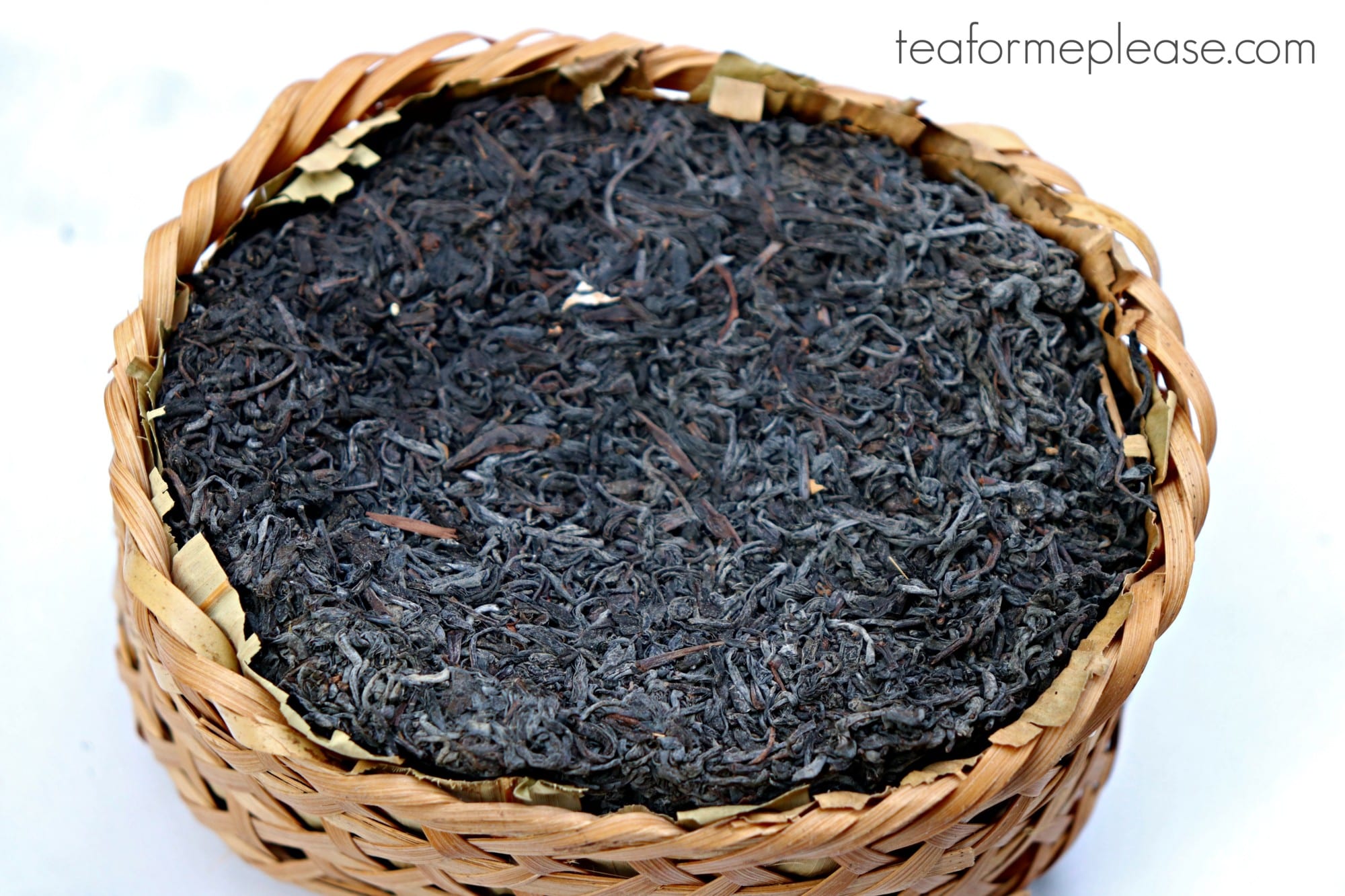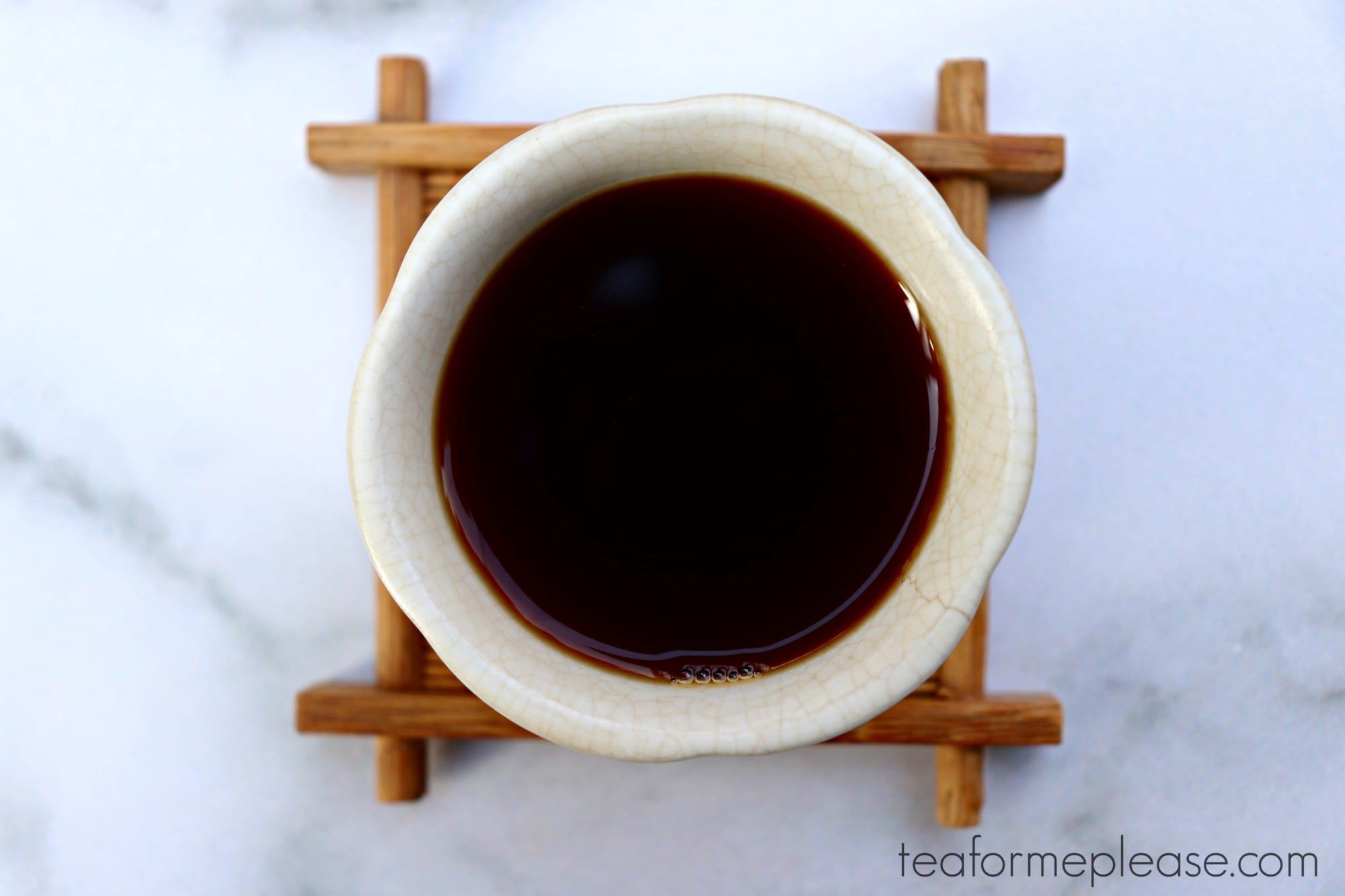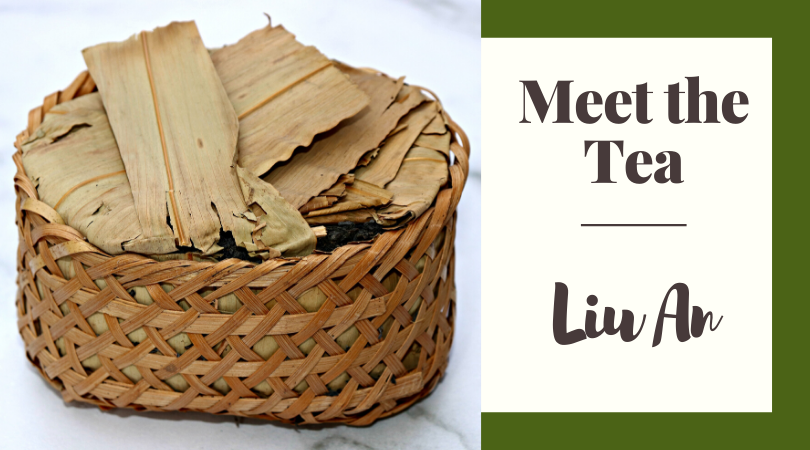Puerh gets most of the spotlight when it comes to dark tea but there is so much more out there to explore. Liu An is a type of heicha that is produced in China’s Anhui Province. I recently purchased a basket through a group buy so I thought this was the perfect opportunity to highlight this tea. There is astoundingly little information about it available online but I’ve done my best to collect as many factoids as I can. The names are similar but this tea should not be confused with Liu An Gua Pian, which is a green tea from the same region.
How It’s Made
The leaves are withered after harvesting in order to remove some of the moisture. The leaves are then pan fired in order to halt oxidation and then dried. At this point in the process the tea is considered mao cha, also known as rough tea. They are then stored until the beginning of autumn.
The leaves are baked when processing resumes and then sorted. Huang Pian (yellow leaves) and stems are removed. The different grades of tea are separated through sifting. They then undergo high temperature firing using a bamboo frame. The leaves are then spread in a thin layer outdoors and left overnight so that they can absorb the “white dew”. It is thought that this process was the inspiration behind the wo dui step that is now used to ferment puerh.
Following this step the leaves are steamed and packed in baskets that are lined with bamboo leaves. These baskets are then tied together and fired for one last drying step. It can take up to 2 days for enough of the moisture to be removed. The tea is then stored away. Traditionally Liu An is not sold for three years after it processed

Where It’s From
Liu An hails from Qimen County in the Anhui Province of China, particularly around Luxi and Rongkou village. This area is geographically important because it is situated at a meeting point of several rivers. Production of this tea was practically nonexistent after the 1940’s but was revived by tea lovers in the 1980’s. Sun Yi Shun is one of the oldest brands for this type of tea so it is a name that you will see often.
What It Tastes Like
Since Liu An is fermented, the taste will be somewhat similar to shou puerh. Don’t let that scare you away, though! It is earthy but I find that the taste of this tea comes across as a bit cleaner and more mellow. Liu An is known for having an aroma of betel nuts. I’ve never tasted one but I can tell you that this tea has a distinct sweetness with notes of bamboo. There is also something vaguely medicinal about it, like the aroma of stepping into a herbal shop in Chinatown. It’s not quite ginseng but it is definitely along those lines.

How to Brew It
Li An is a relatively easy going tea. It does not have a lot of natural bitterness so it can stand up to higher leaf to water ratios. For that reason, gongfu brewing is generally the best way to go. Boiling water and longer infusions of at least 30 seconds are my personal preference. I would also recommend at least one rinse, particularly for teas that have been wet stored. It is traditional to add a piece of the bamboo wrapping to the leaves while brewing.
Have you ever tried Liu An? Let me know about it in the comments below

Interesting! I definitely thought of Liu An Gua Pian when I saw the title of your post, I didn’t realise that there’s a dark tea version.
I am unsure , but I believe that you may have confused liu an with Liu bao in one sentence when referencing betel nut flavour. Many Liu bao teas have a distinctly betel nut flavour and betel nut is widely consumed throughout se east Asia like Malaysia where Liu bao is primarily drank.
I would say Liu an has a very straw hay mushroom dirt flavour in the beginning so I would recommend at least two rinses and good filtration After that it has a very cool ,sweet refreshing green tea taste with a beautiful red liquor that holds up to many infusions unlike greent tea but lacking the complexity of puerh
I may be wrong but liu an as a hei Cha is somewhat a novelty in china without much a following. Hopefully they will continue to hone this craft it is a great hei cha, the oolong wulong debate mentioned below is Cantonese vs mandarin, in Cantonese we say oo long
Thanks for the informative article, Nicole!
I’m afraid you got the name of the tea and its place of origin wrong, though. Let me explain:
The Chinese characters are 六安. The first character has two pronunciations: Liu, which is more common, and Lu, which is the one that’s actually used where this tea is grown. So the real name is Lu An, not Liu An.
Thanks for the info as always, Lew! The seller in China that this tea came from, among many others, does spell it as Liu An. That doesn’t make it right of course but there is certainly a lot of misuse out there if this is the case. Perhaps it is similar to wulong vs oolong. One is more correct but the other is more commonly used.
Thanks for the kind words, Nicole.
I’m glad you mentioned the case of oolong. As an amateur Chinese tea lexicographer, I try to keep my pedantic tendencies in check, and Babelcarp has oolong as a main entry and wulong mainly as a pointer to oolong.
One of the important reasons why I made oolong primary is that when most Mandarin speakers say “wulong”, it comes out sounding more like an English speaker saying OOlong than WOOlong, that is to say, the W sound is pretty subtle.
But the situation is reversed when it comes to Lu An vs. Liu An: a native English speaker uttering the first would have a much better chance of being understood by a Chinese speaker. It’s basically the difference between “pew” and “poo”.
This discussion is not good. The tea name is Chinese and they have accents and Westerners have accents, Is it Long Jing or Lung Jing we all know what is meant – Puerh or Puer – Wolong or Oolong – Mao Feng (Feng rhymes with ten-g or bong), Fujian or Fukien?
In England we say tomato and you say tomato – and BTW it is ‘aluminium not aluminum!
Thank for this article, it is difficult to find information online about hei cha anywhere. I had 2 questions for you however. When you were describing the processing steps, you mentioned that the tea is put into bamboo baskets and fired at high temperature. Does this mean charcoal roasting or just simply baking? Also when the tea is finally placed into the baskets and then fired 1 final time, is this over charcoal or oven baked? Thank you.
I’m so glad that it was helpful, Connor! It’s definitely difficult to find info on heicha. A regular wood fire is used for both roasting steps for Liu An.